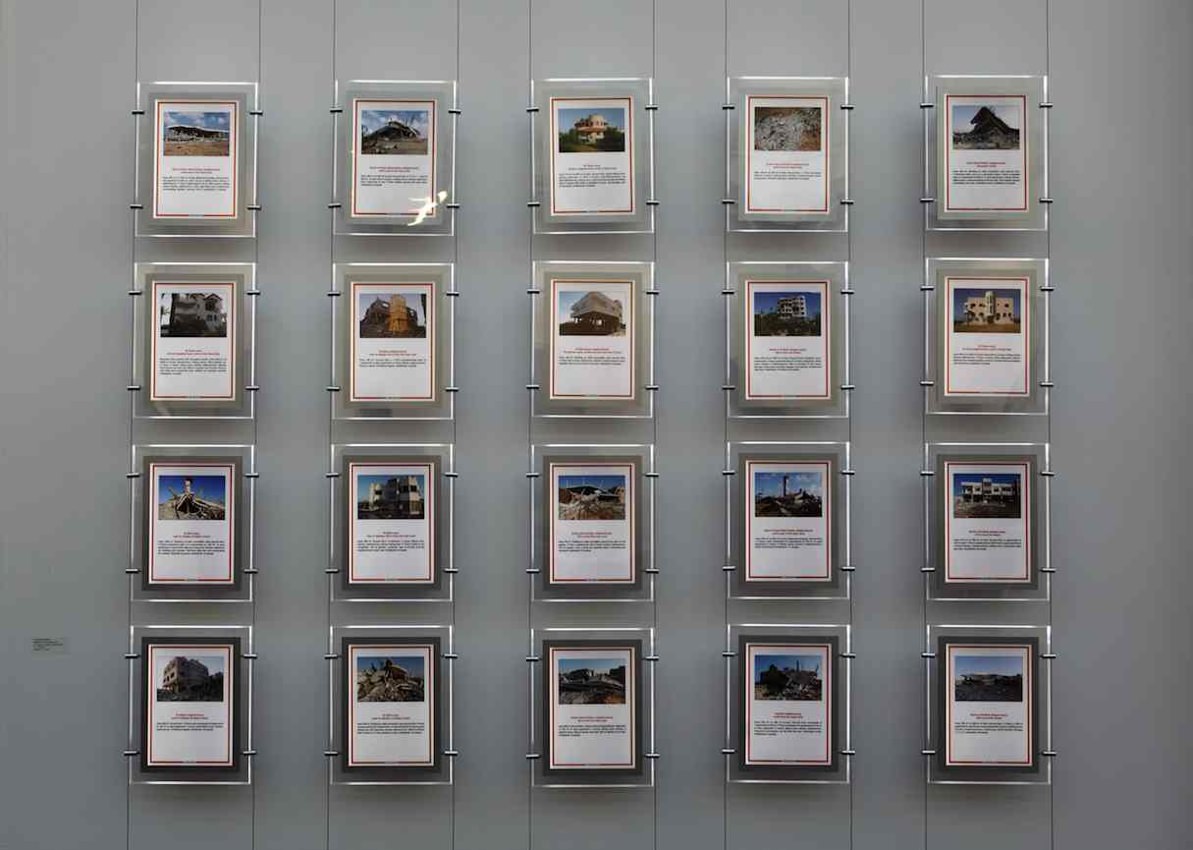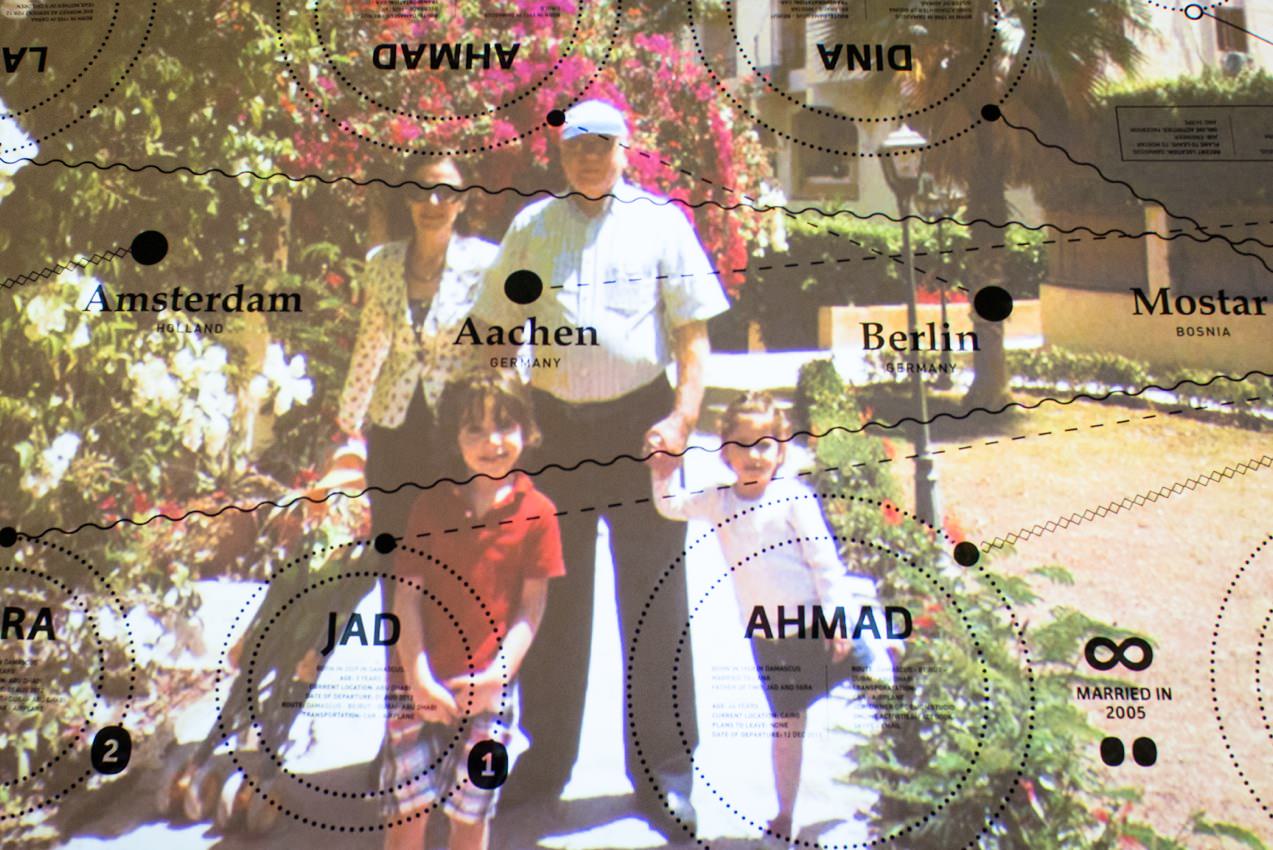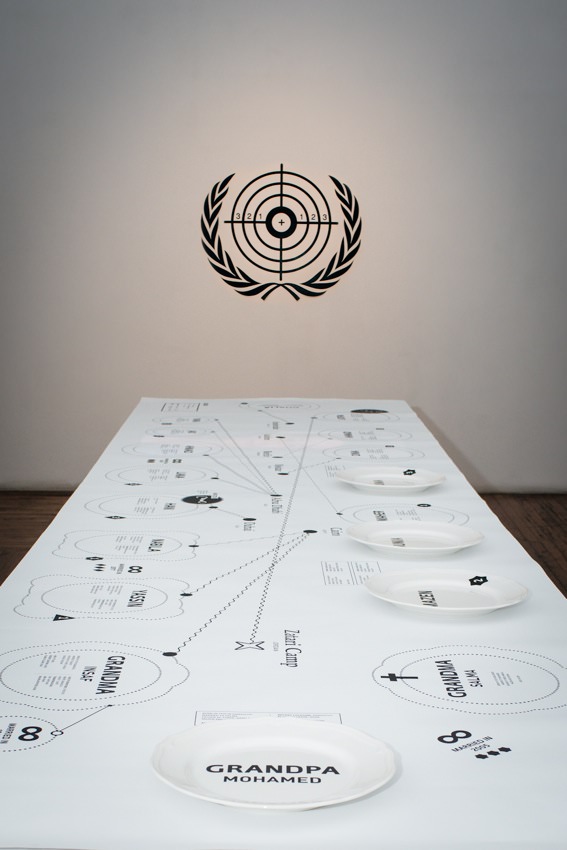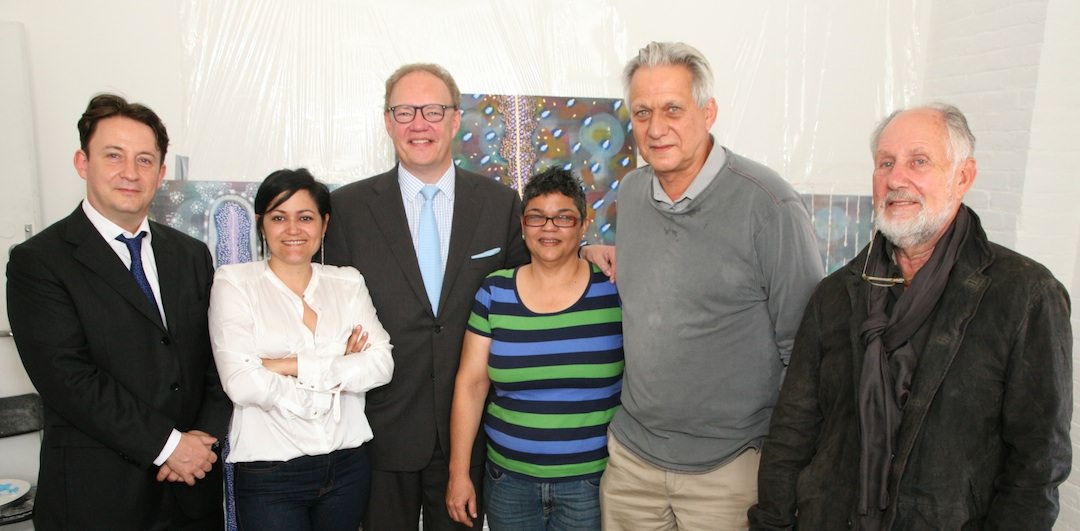This summer, the ISCP in Brooklyn, NY has played host to a residency in partnership with Edge of Arabia and Art Jameel. Traveling and living in New York for the first time are artists Taysir Batniji, Ghalia Elsrakbi, and Lauren Alexander (from Palestine, Syria, and South Africa respectively). Elsrakbi and Alexander make up the collective Foundland, whose work is currently being show at ISCP in the exhibition “Escape Routes and Waiting Rooms.”
We checked in on Batniji and Foundland about a month into their residency to see how their time in New York has gone thus far.

Taysir Batniji
GH0809
2010
Courtesy of the artist and Edge of Arabia
WHITEWALL: What are your goals for your time in New York/the US?
TAYSIR BATNIJI: One of my principal aims for this residency was/is to discover the art scene in the US and especially New York, through visiting museums, galleries, collections, etc. In this sense, field trips organized by ISCP and meeting visiting critics are very interesting and a great opportunity. On July 30, I was invited to present my work and give a talk at the Middle East Institute in Washington D.C., which was a great occasion to meet people and to see how my work is received. I’ve never had the opportunity to visit US in person, so it has been a wonderful experience thus far.

Installation view of Foundland
Photo by Julie Jamora
FOUNDLAND: Before arriving in New York we had the idea to investigate an immigrant community, which existed in Manhattan in the late 1880s. This Syrian, Lebanese, and mixed-origin migrant neighborhood, located in lower Manhattan, was a bustling community with plenty of cultural and gastronomical influence on New York City. The area existed until about the 1940s when the community was forced to move, to make way for the Battery Park area.
Our goals are to find out as much information as possible about the area formerly known as “Little Syria.” We will be doing this by meeting with various political and activist groups who are working towards engaging more attention for the area and are working to save the last remaining buildings preserved from this period. We will be collecting and gathering research from all sources, and we aim to use the material that we collect to produce a public installation, a written piece or a visual manifestation. Besides this, we are enjoying meeting curators and artists from around the world and expanding our network.

Installation view of Foundland
Photo by Julie Jamora
WW: After spending nearly a month in the city, how have you seen your work or your approach to art influenced, if at all?
TB: I believe that each new experience and each new place an artist visits powerfully influences his or her work – although it is hard to evaluate the influence on my work over this short period of time (I arrived in late July and am here through September). Influence is inevitable.
Before I came to New York, I thought my work was particularly influenced by American cinema and fiction – the strong and lasting visuals of American culture I had access to. I must admit now that when I watch American films, I no longer feel that way. This proves that real experiences through travel and meeting and interacting with people are important to evaluating preconceived notions – it helps get rid of the illusion.
FL: New York City is truly defined by migrants, and we feel that different cultures are able to exist together, with few people feeling like an “outsider.” In this regard, living in Europe as a person of non-Western background is very different. There is always a feeling of being different to the dominant culture. Therefore, as a platform and surrounding to collect data, images and experiences, New York City is a unique and compelling place.
WW: Do you see yourself doing more in the US in the future?
TB: I hope so.
FL: We find New York City very inspiring and we would love to come back to work here in the future.
WW: What has your experience been connecting with American culture and/or other artists?
TB: While my time in New York has offered a unique and fruitful opportunity to introduce my work to American audiences, the timing of the residency is set in a very delicate and very difficult time for me with what is happening in Palestine and especially in Gaza, my hometown. I’m here in a country that supports Israel – which occupies my land and kills my people. This support is not only at the high political level, but also through mass media. At the same time, as an artist, I’m supposed to make connections, to discover this country and to be open to art and culture and receptive to all that I’m living as a new experience here. And this is what I’m trying willingly. But it’s a bit paradoxical and sometimes disturbing. For me, it is necessary to digest this situation and try to take some “distance” in order to integrate it may be in an “artistic” thinking.
FL: In many of our past projects we have looked at the appropriation of Western popular culture within a Middle Eastern context, particularly for the production of political propaganda images. We find it interesting to be in a location that is in some ways considered to be at the heart of popular culture production. It is a very interesting consumer space to witness, especially in contrast to our residency in Cairo, Egypt last year. Furthermore, in the US, artists do not have as much access to public funding as we experience, being based partly in Europe. It has been eye opening for us to see how American artists are able to transition between working for the art market and developing their own artistic practice. We relate to this multi-faceted way of working in our own practice.
WW: Do you see your work in conversation at all?
TB: I find that there is a common ground between my work and that of Foundland, through themes such as movement or displacement, memory, media etc. Although, an important part of my work is related to the political situation in Palestine, in particular, and the world, in general, my approach towards politics is personal or subjective, meditative, and is part of a long-term reflection that mixes the personal and the collective. In my work I try to give a different reading of events, far from clichés and media images. What interests me is the human dimension that results from political situations. I try to find the most appropriate way to interpret this dimension, conceptually and aesthetically, and at the same time, question the modes of representation itself.
FL: Taysir often creates work related to his hometown, Gaza, themes that are similar in our works like displacement, media manipulation of imagery, notions of home and belonging, national identity, and human right discrimination.
The ISCP residency continues through the end of September. Foundland’s exhibition is on view through September 26.






